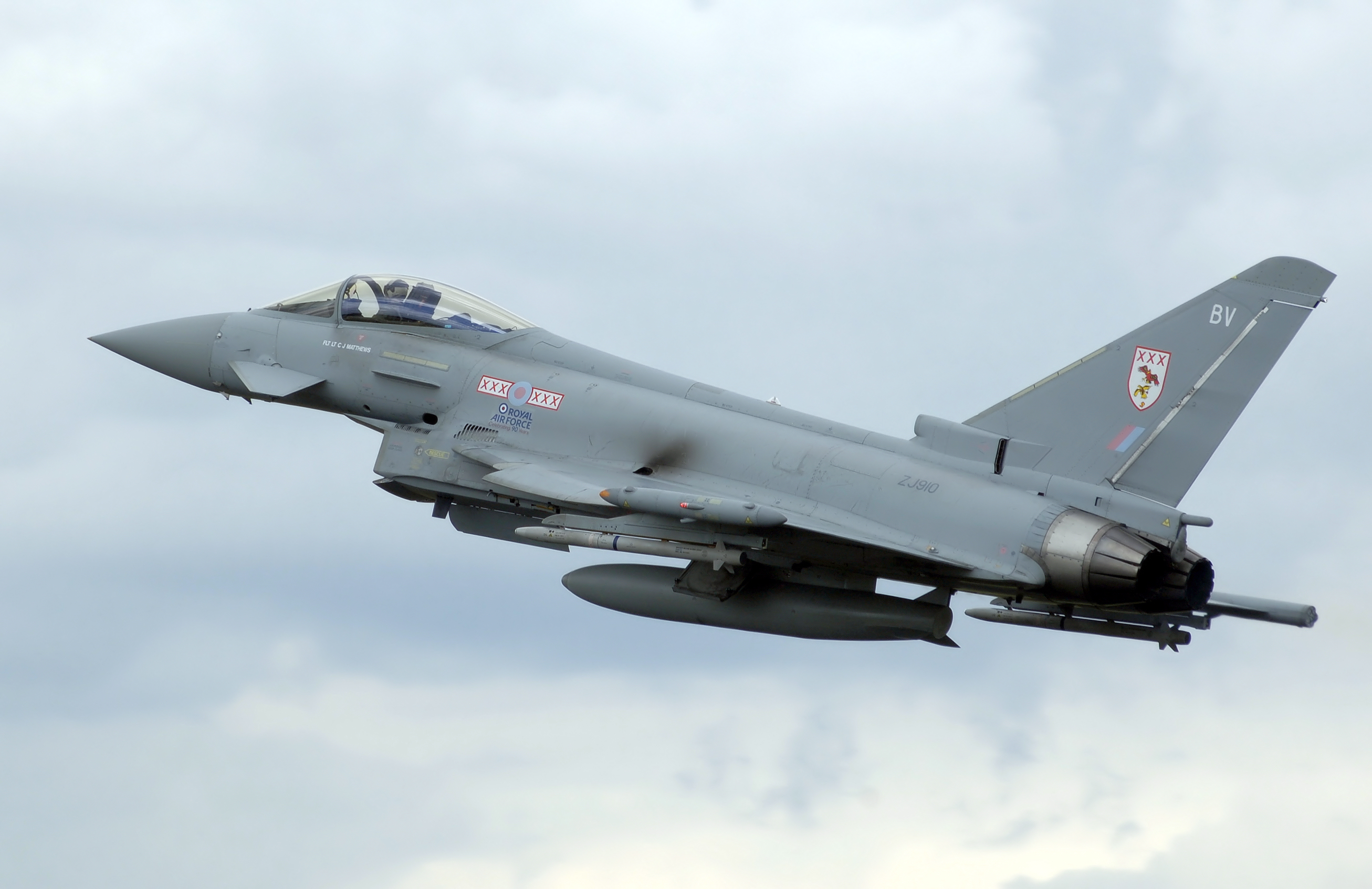(NSI News Source Info) January 22, 2009: The Eurofighter Typhoon is the world’s biggest fighter program, increasing production to as many as 60 aircraft per year (versus just over 40 for the F/A-18E/F Super Hornet). The Royal Air Force declared the fighter combat-ready in 2008 for air-to-air and air-to-ground missions. Germany and Austria also declared the aircraft operational, the latter within nine months of receiving its first jets.
Another milestone was the delivery late last year of the first Tranche 2 Typhoons to the sponsor nations: the U.K., Germany, Italy and Spain. Although the U.K. has added an air-to-surface capability to its Tranche 1 Typhoons through the CP193 modification program, Tranche 2 aircraft, with more modern mission computers, will be the basis for a full multirole capability.
This year will see a number of important events for the Typhoon. Its combat debut, however, will probably not be among them: The U.K. Defense Ministry announced last July that the Tornado GR4 force will take over close air support missions in Afghanistan from RAF Harrier GR9s in 2009. 

The Eurofighter Typhoon is a twin-engine canard-delta wing multirole aircraft. It is being designed and built by a consortium of three separate partner companies: Alenia Aeronautica, BAE Systems, and EADS working through a holding company Eurofighter GmbH which was formed in 1986. The project is managed by NETMA (NATO Eurofighter and Tornado Management Agency) which acts as the prime customer. The series production of the Eurofighter Typhoon is underway, and the aircraft is being procured under three separate contracts (referred to as "tranches"), each for aircraft with successively greater capabilities. The aircraft has entered service with the UK Royal Air Force, the German Luftwaffe, the Italian Air Force, the Spanish Air Force and the Austrian Air Force. Saudi Arabia has signed a £4.43 billion (approx. €6.4 billion c. 2007) contract for 72 aircraft.
The first Typhoons are due to be delivered to the major export customer, Saudi Arabia, this year. The Saudi government has ordered 72 aircraft and reportedly wants another 40.
Typhoon has been certified for operations by three countries.
One competition where the Typhoon is still in play, in Switzerland, is expected to be decided in the third quarter. Interest has also been reported from Oman, and the group has responded to requests for information from Bulgaria, Romania, Croatia and Turkey. The Typhoon has been proposed in India, and the team is working in South Korea and Japan. The Typhoon was not shortlisted in Brazil, however, and the consortium withdrew from the Netherlands, Norway and Denmark late in 2007.
Japan is a long-shot prospect, but an interesting one. The country’s strong interest in the F-22—which the U.S. refuses to discuss with it—indicates that it wants an air-to-air package. With large radar, supersonic agility, speed and altitude performance and missile capability, the Typhoon is among the world’s top three air-to-air fighters (along with the Su-35BM and F-22). Combined with Japan’s frustration over the F-22, this could create an opening for the Typhoon.
Germany expects to take its Typhoons on international exercises in 2008. Flight tests will continue on the Phase 1 Enhancement (P1E) package, which includes new surface-to-air weapons and provisions for a laser-designation pod and is due to be operational in 2011.
More important still will be the outcome of negotiations for Tranche 3 fighters, basically comprising 236 aircraft for the four partner nations. (Tranche 2 was originally 236 aircraft, but now covers 251 jets, including 15 to replace Austria’s Tranche 1s.) As with the 2004 negotiations over Tranche 2, the discussions are complex and under time pressure to prevent the production line from drying up as long-lead items for the last Tranche 2 aircraft leave the factory.
Tranche 3 negotiations are also governed by the tight contractual conditions covering the basic 620 aircraft for the four partner nations: Canceling any of these aircraft results in penalty charges that are comparable to the cost of purchasing them. The U.K. and Italy are pushing to cut their offtakes of aircraft—ironically, since the cancellation clauses were written to prevent backsliding by Germany, which has restated its commitment to a full 180 aircraft. One question is whether export sales can be counted against national purchases and, if so, how this should be done.
The Eurofighter consortium is trying to establish a more flexible, less costly way to manage the flow of improvements into the aircraft. Although the industrial partners were due to submit a detailed firm-price proposal for the next stage—Phase 2 Enhancement (P2E)—last September, this is now likely to be superseded by a process that can deliver new capabilities within 1-2 years of a decision to go, and accommodate individual requirements while maintaining a stable production configuration.
This could be good news, speeding deployment of important capabilities such as the MBDA Storm Shadow cruise missile, Meteor air-to-air missile and an active electronically scanned array radar that would otherwise have to wait until completion of the P2E package in 2014.
No comments:
Post a Comment